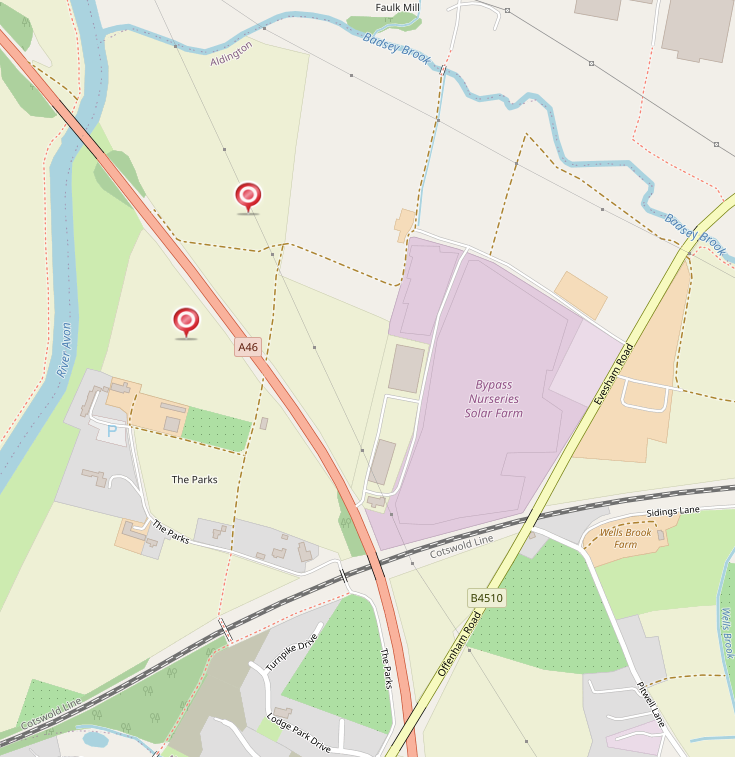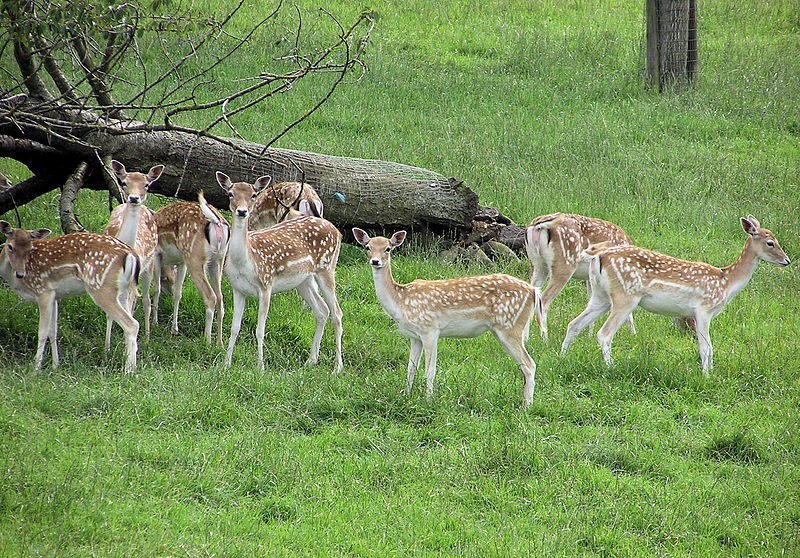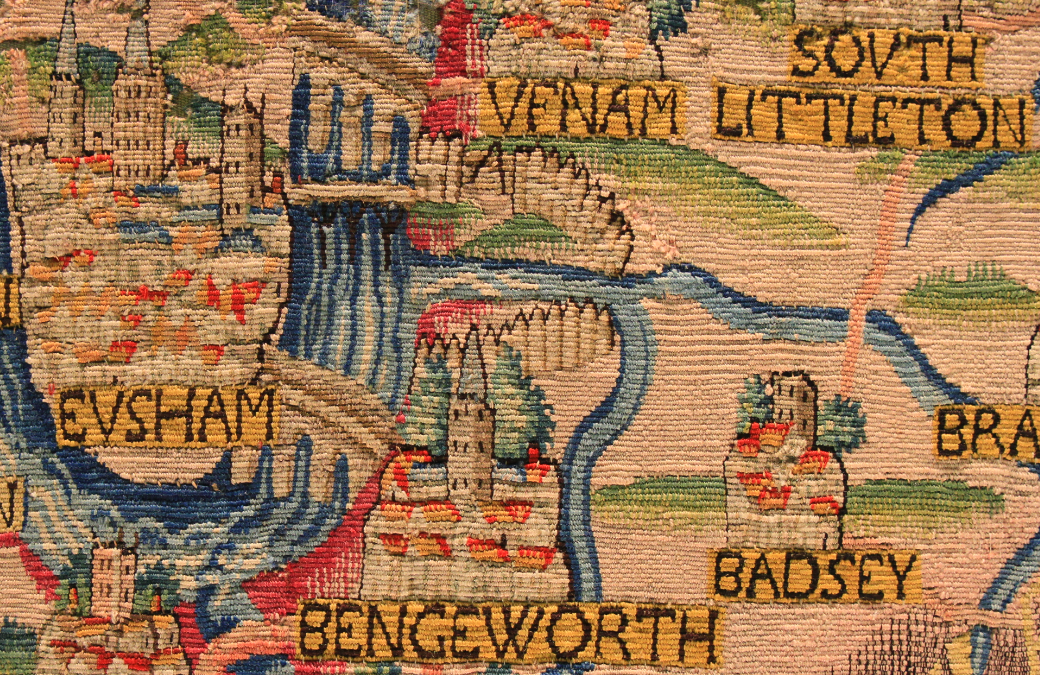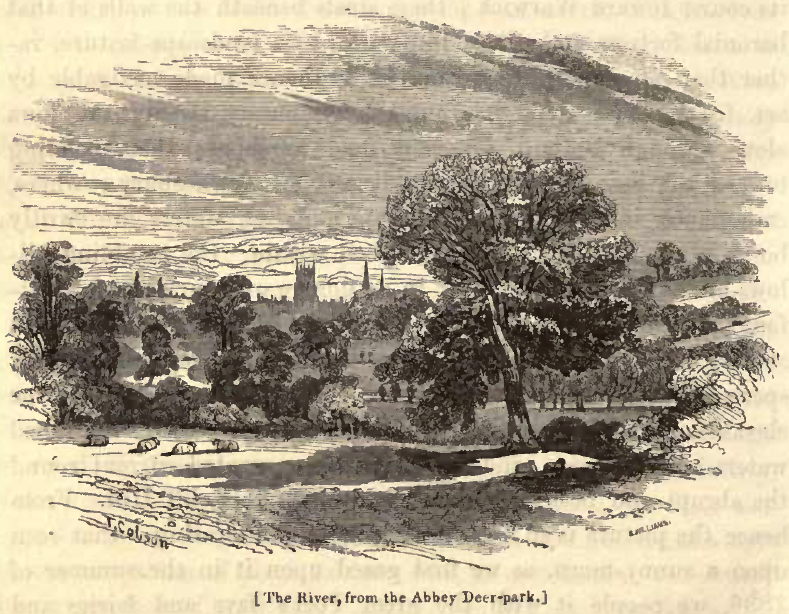
The traditional parish boundary of Aldington continues to the north west across the Offenham Road to reach the River Avon. This includes an area called The Parks, Parks Farm, and what was until recently the Riverside Hotel. This part of Aldington was once a Deer Park belonging to Evesham Abbey.
The deer park was founded by William Cheriton, Abbot of Evesham, around the year 1330. Despite an otherwise harsh lifestyle, the monks of Evesham Abbey must have eaten well. Produce was available from a number of their own farms in several local villages including Aldington and Wickhamford, fish from ponds near the Abbey in central Evesham, doves (then a delicacy) from dovecotes in Offenham and Wickhamford, and venison which would come to their table from the deer park alongside the River Avon.

As late as the 1831 Ordnance Survey map the area of Aldington beyond Offenham Road was called Aldington Lays (or Leys). This indicates that it was still pasture land for grazing animals, rather than the arable crops that were so well known across most of the Badsey and Aldington area.
The deer park was called Shrawnell Park – nobody seems to know why – and it continued towards Bengeworth alongside the river. In Bengeworth today a road near the Weir Meadow caravan park is called The Leys, quite possibly because it was at the edge of the deer park.
At some point the park was extended north, and seems to have stretched to the north end of the current village of Offenham. According to author William Tyndal, in his 1794 book, the History and Antiquities of the Abbey and Borough of Evesham:
John Norton, prior of the cloister, on the 4th of September, 1483: the first year of Richard III. This Abbot first instituted the feast of the visitation of St. Mary to be yearly celebrated. He also ordered that, on the day of his own anniversary, each brother should have twenty pence; and among them one deer, from the deer-park at Offenham, which he enlarged for that purpose.
It is possible the deer shared the land with sheep or other animals. At the northern end of Offenham a feature called the Deer Leap is still shown on fairly recent Ordnance Survey maps, and is also the name of a nearby house. A Deer Leap was a type of wall or bank which allowed deer into the park but not back out again.
The boundary fence of the deer park is shown on an excellent large-scale tapestry map of Worcestershire which was produced for Ralph Sheldon in the year 1590. The map has recently been on display at the Bodleian Library in Oxford but is now in storage. The map shows that the fence around the park was made of wooden stakes, which would probably have been on a bank of earth with a ditch alongside. This helps to explain why there is no known evidence of the park on the ground today.

There are no known remains of the fence or embankment for the deer park, so we do not know how far it came close to or over the Offenham Road towards Aldington. The tapestry map suggests it reached as far as the Badsey Brook stream junction north of Aldington, though that seems unlikely. The map wasn’t very accurately surveyed but was the best available at the time. Other interesting features on the tapestry map include Badsey Brook, Badsey village and Church, and the old Twyford Bridge and Ford at Offenham.
The official dissolution of Evesham Abbey took place on 23rd January 1540. A few years later the deer park was purchased from King Henry VIII by Sir Philip Hoby. He also bought much of the other Abbey land and the remains of the Abbey itself.

There is no known record of when the deer park reverted to other farming purposes. However an illustration from George May’s definitive Descriptive History of the Town of Evesham, published in 1845, still shows Park Farm with pasture land and sheep.
David Ella, April 2020 (updated May 2020)
